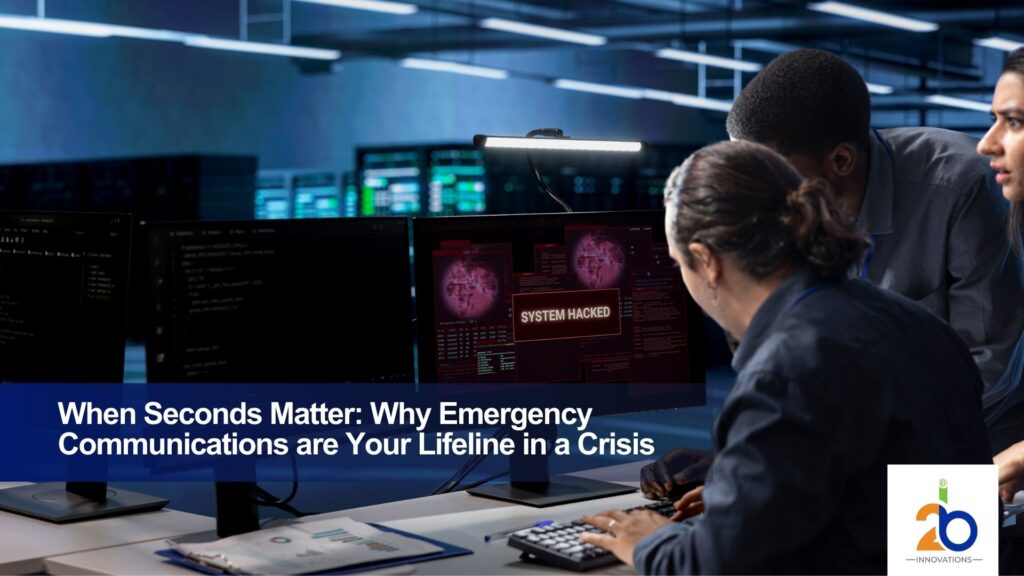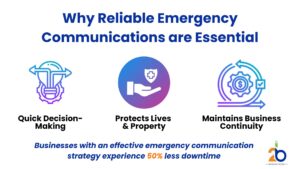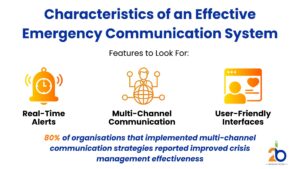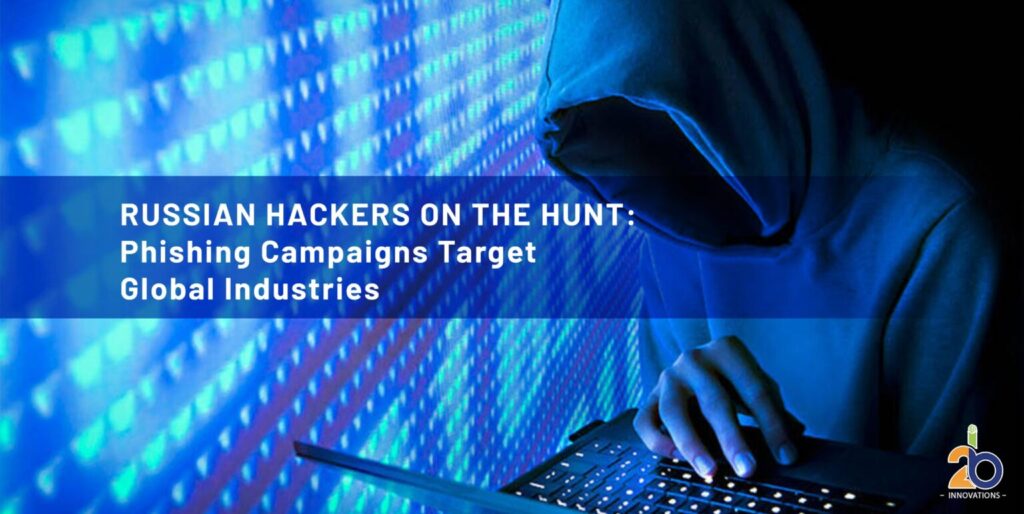
In an era where cyber threats are not just evolving but multiplying, businesses and organisations are grappling with the challenge of safeguarding their most vital assets, that is people, data, and infrastructure. The stakes have never been higher, and yet, many organisations still lack the most essential tool during a crisis: a reliable emergency communications system.
Imagine this scenario: a sudden ransomware attack locks your entire network, freezing your operations and putting sensitive data at risk. In those critical minutes, how quickly can you alert your teams, relay the severity of the breach, and coordinate a swift response? For many businesses, this process takes too long, leaving them vulnerable to escalating damage.

Now let’s step back and assess: Are you equipped to respond when disaster strikes?
The Case for a Strong Emergency Communication System
Emergency communications aren’t just about responding to fires or evacuations anymore—they’ve become the backbone of organisational resilience in the face of digital threats. Whether it’s a cyber attack, a natural disaster, or an unexpected system outage, how you communicate during the first minutes of an incident can define your organisation’s survival.
Effective emergency communications provide real-time updates, ensure that the right people are informed immediately, and foster a unified response to the problem at hand. But not all businesses have this capability integrated into their operations, leaving room for chaos when crises inevitably strike.
A Growing Risk Landscape: The Importance of Being Proactive
Data breaches increased by 27% in the first half of 2023 alone. The average cost of a ransomware attack for businesses has reached $4.62 million, according to IBM’s 2023 Cost of a Data Breach report. These numbers aren’t just alarming, they represent the reality of operating in today’s increasingly digital landscape. It’s not if but when your organisation will face an emergency.

A study by the Ponemon Institute found that organisations with a strong incident response plan including effective emergency communication systems saved an average of $2.66 million in the event of a cyber attack. This means that investing in reliable, automated communication tools could directly impact your bottom line and long-term business viability.
Why Most Systems Fall Short: The Human Element
The problem with most current communication strategies is that they rely heavily on manual processes, email threads, or sporadic phone calls. During a major security incident, this just isn’t enough. There’s too much room for error like messages that don’t get delivered on time, critical information is misinterpreted, and sometimes, the very people who need the information most are left out of the loop.
What businesses need is an automated, foolproof system that removes the guesswork and reduces human error near to zero. Imagine instant alerts cutting through the noise, popping up on desktops and mobile devices, ensuring that employees see and act on information immediately, no matter where they are.
When Every Second Counts: The Power of Automation
Let’s face it: when an emergency hits, your team needs to focus on responding to the problem, not chasing down the right people or waiting on a chain of command to approve a mass alert. Automated emergency communication systems streamline this process. A simple, pre-built system allows you to send targeted messages to the right individuals be it specific departments, leadership teams, or the entire workforce.
These systems work faster than human intervention, broadcasting critical alerts in seconds and giving employees a clear course of action. Moreover, automated systems provide message receipts, so you know who has received the alert and who hasn’t, closing the loop in a way manual communications simply cannot.

The Reality of Modern Threats
By the time you finish reading this paragraph, another business somewhere in the world will have fallen victim to a cyber attack. This is the stark reality we face today. The longer your emergency communication process takes, the more exposed your organisation becomes, leading to devastating financial and reputational damage.
Organisations with automated communication solutions can react faster, limit the scope of the breach, and ultimately contain the crisis before it spirals out of control. With the right tools, you can protect your most valuable assets: your people, data, and systems.
But What About the Cost?
Now, you might think, “Can we afford such a system?” The better question is: Can you afford not to have one?
Consider this: The average data breach takes 277 days to identify and contain, but companies that can communicate effectively in the first 30 days cut this timeline in half, leading to significantly reduced costs. The ROI of a well-executed emergency communication system is not just financial but also strategic. It’s about preserving trust, retaining clients, and safeguarding your organisation’s future.
Introducing the Future: 2B Innovations and 4C Security as the Ultimate Solution
At this point, the need for a robust, automated emergency communication system is clear. This is where we come in.
Our solution isn’t just about communication, it’s about building an intelligent, adaptive platform that grows with your business. The 2B Innovations and 4C Security systems integrate seamlessly with your existing infrastructure, providing you with real-time alert capabilities that operate across any device, platform, or screen. Whether you’re on a desktop, tablet, or mobile, our system ensures that critical information is delivered instantly to those who need it most.
More than that, we understand the unpredictability of modern threats, which is why our systems are designed to be proactive, not reactive. We monitor, analyse, and adapt to potential threats before they can impact your business. With us, you gain not just a tool, but a partner in navigating the complex world of cybersecurity and emergency communications.
The Time to Act Is Now
In today’s volatile digital environment, the only way to secure your business is by being prepared. Don’t wait for disaster to strike before you realise how crucial emergency communications are to your survival.
To stay ahead of cyber threats, subscribe to our newsletter for more expert insights. For more information on how we can help protect your business, visit our 2B Innovations and 4C websites. Together, we can build a safer, more resilient future.



